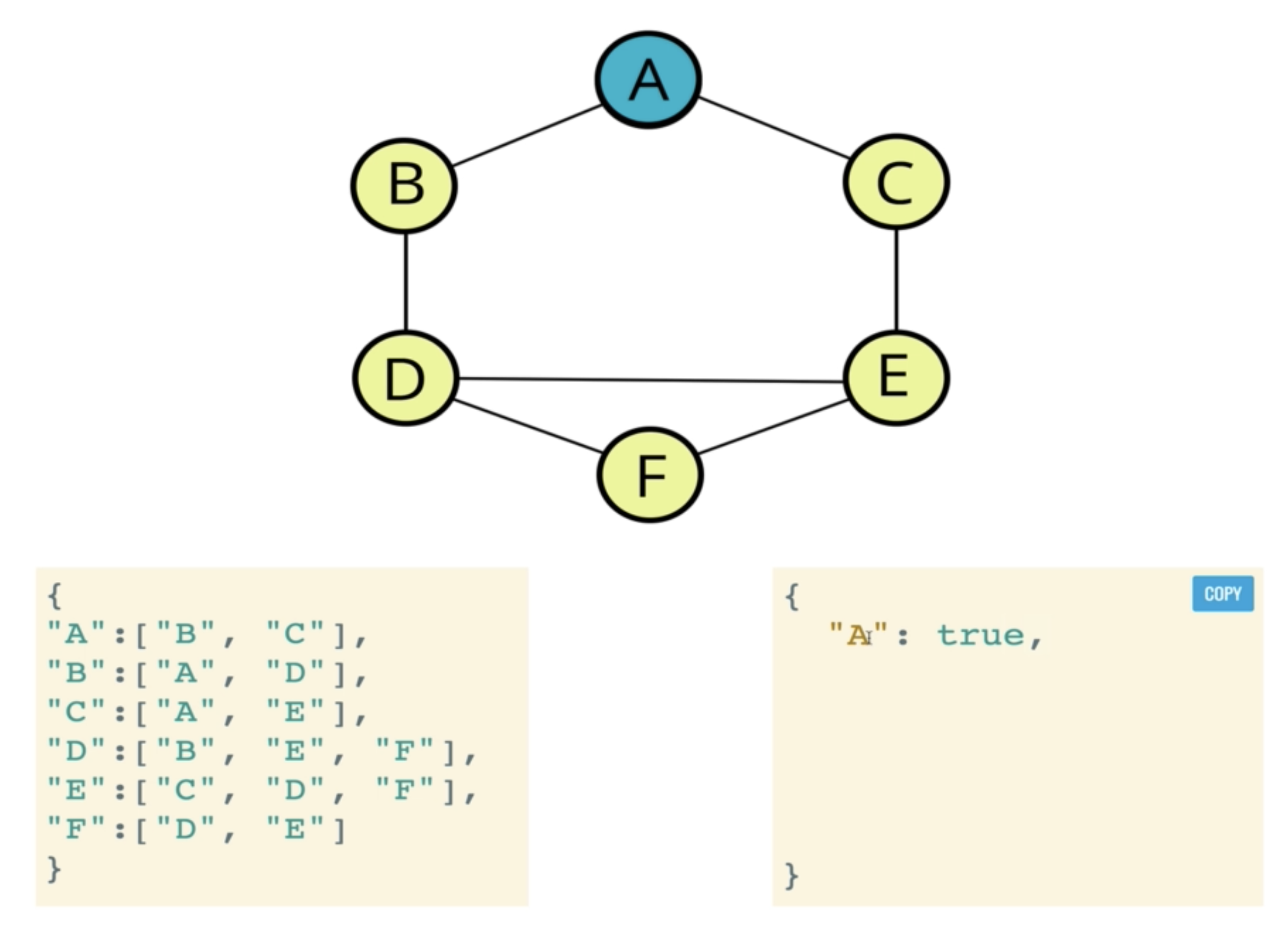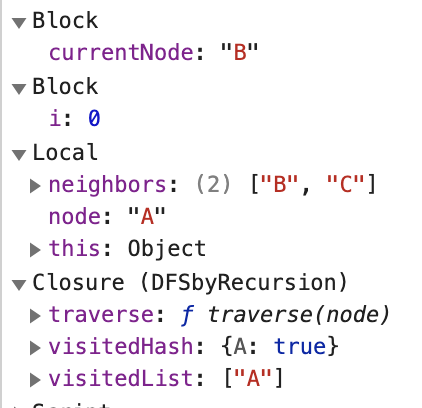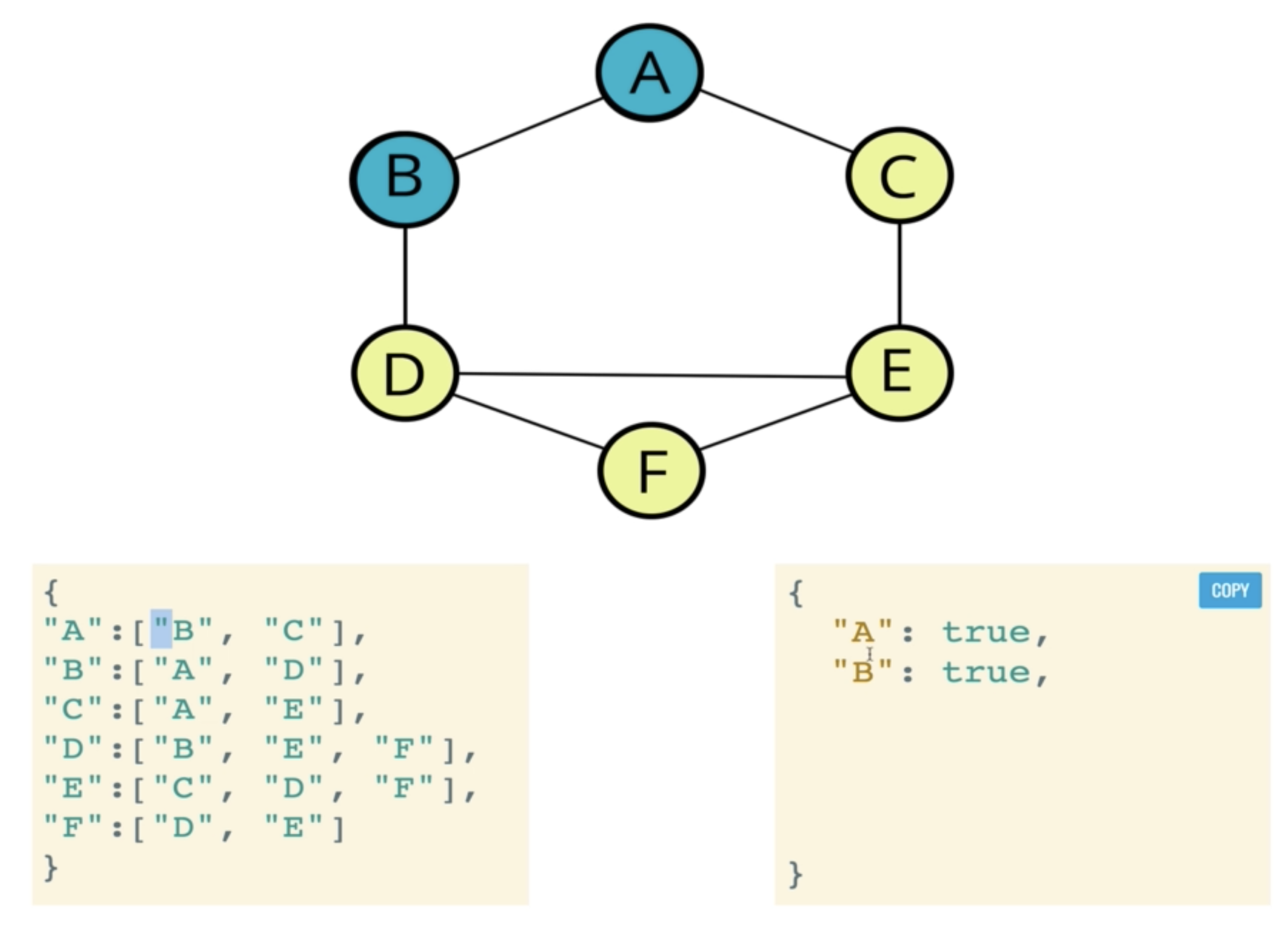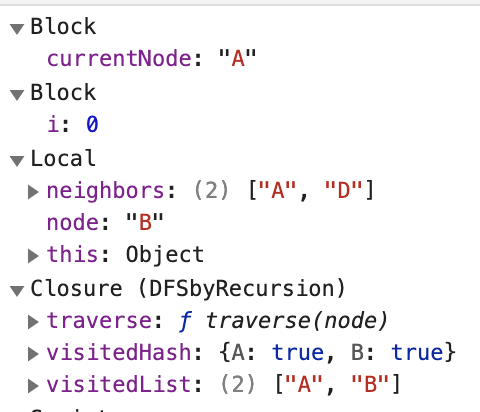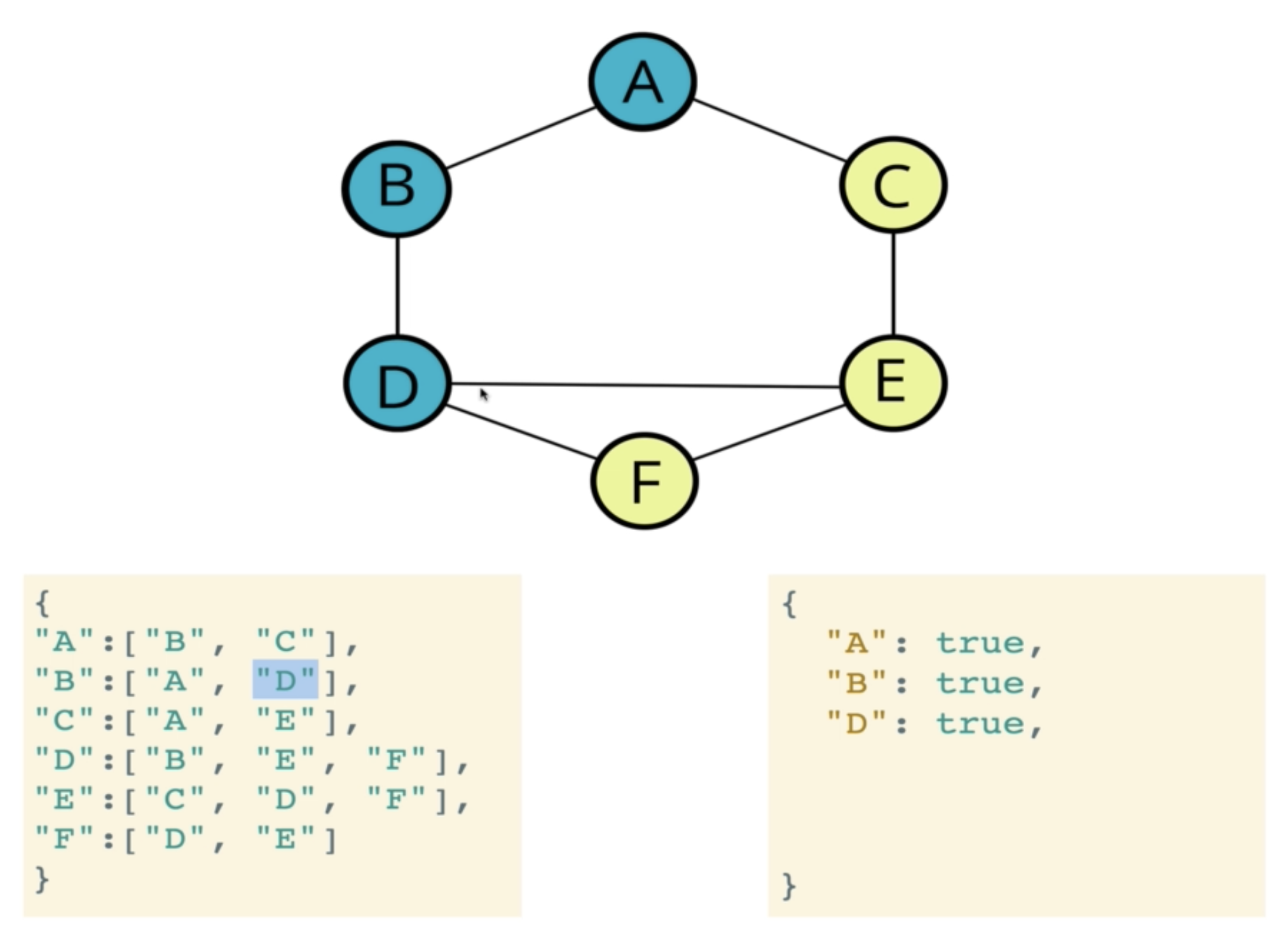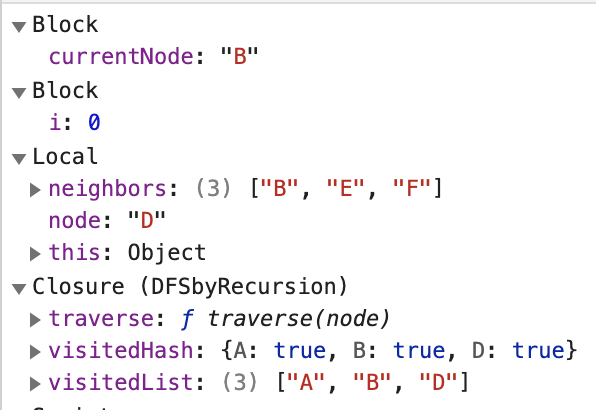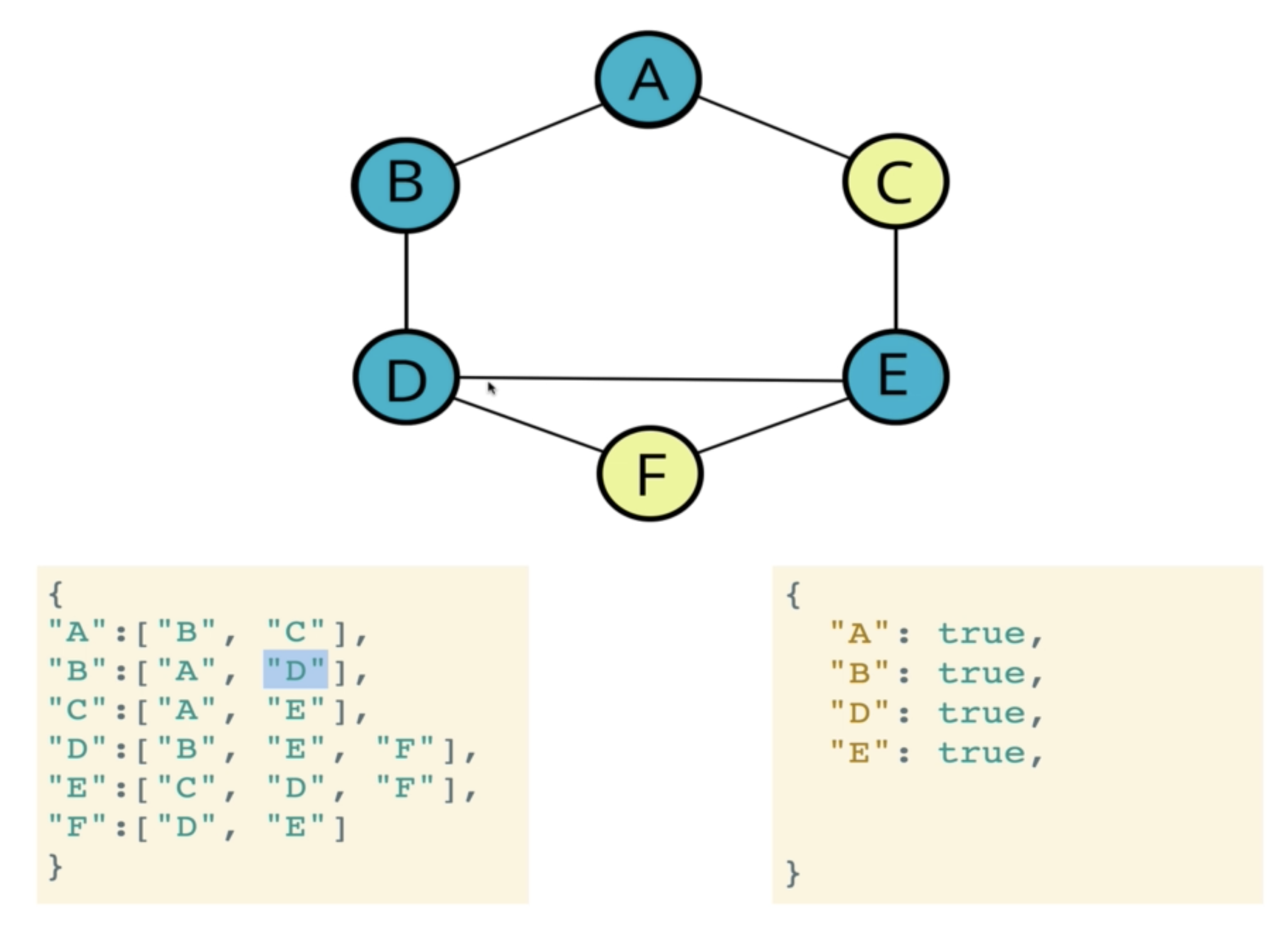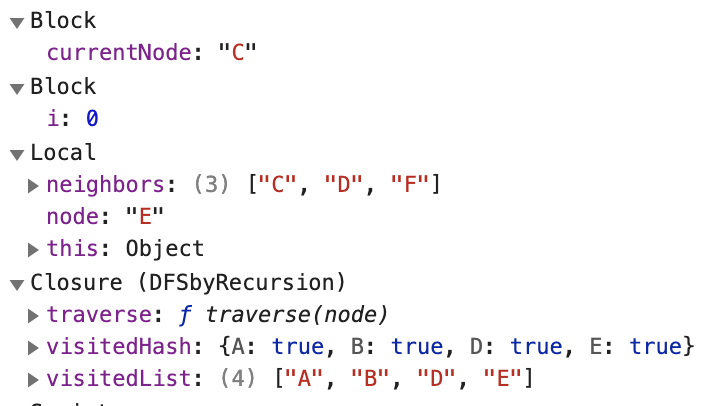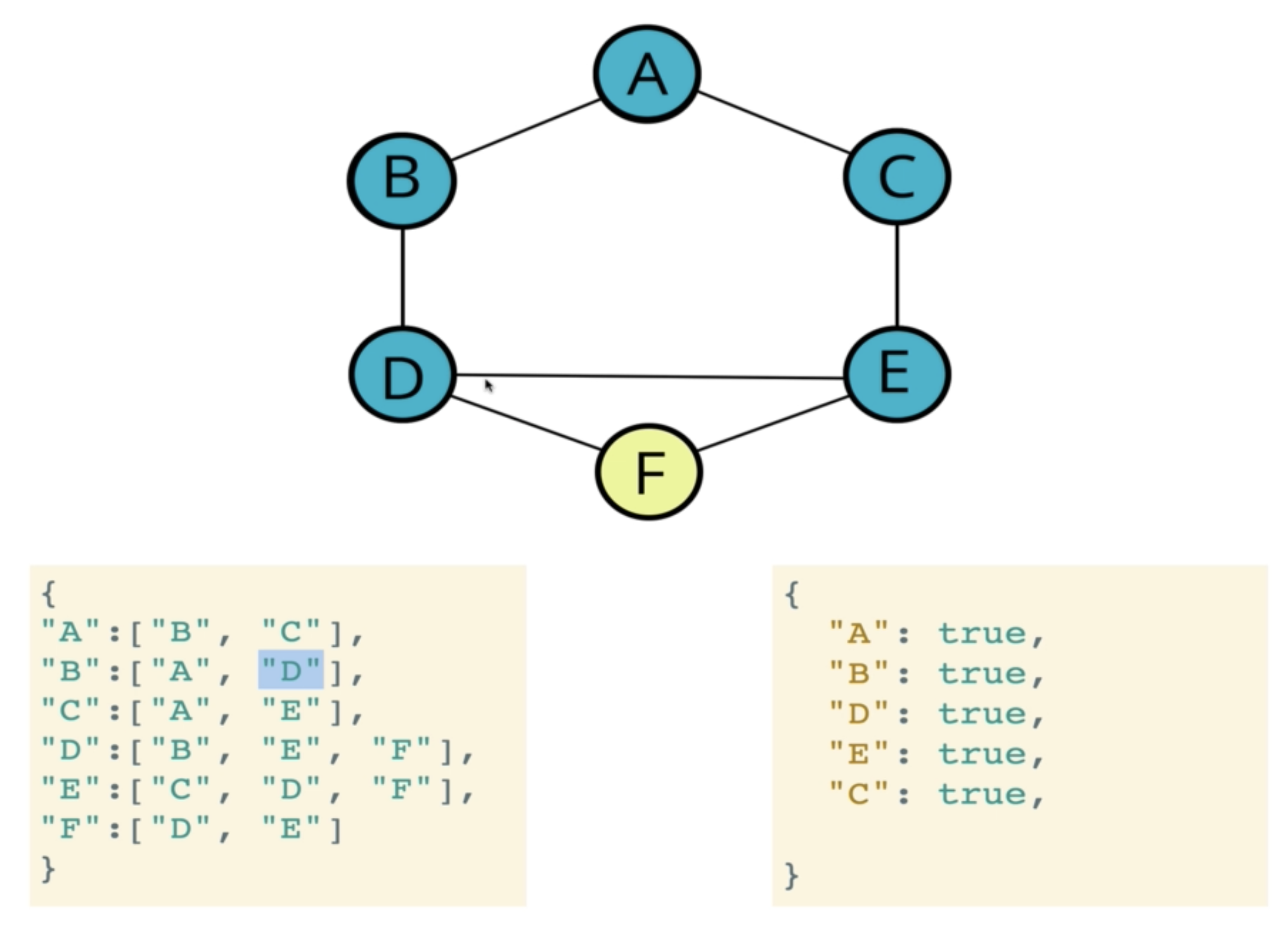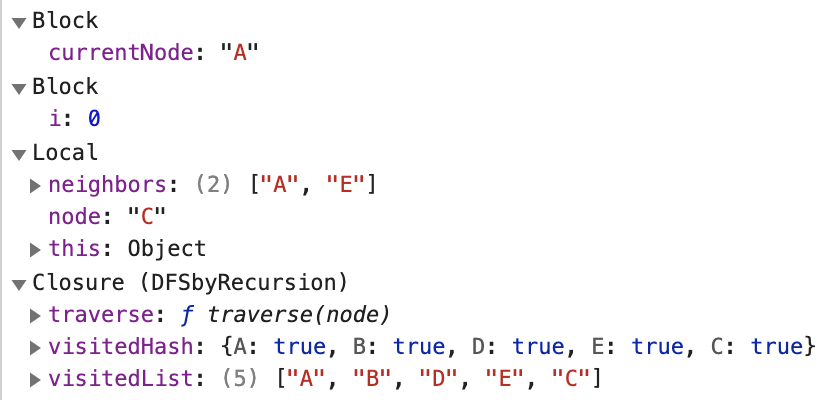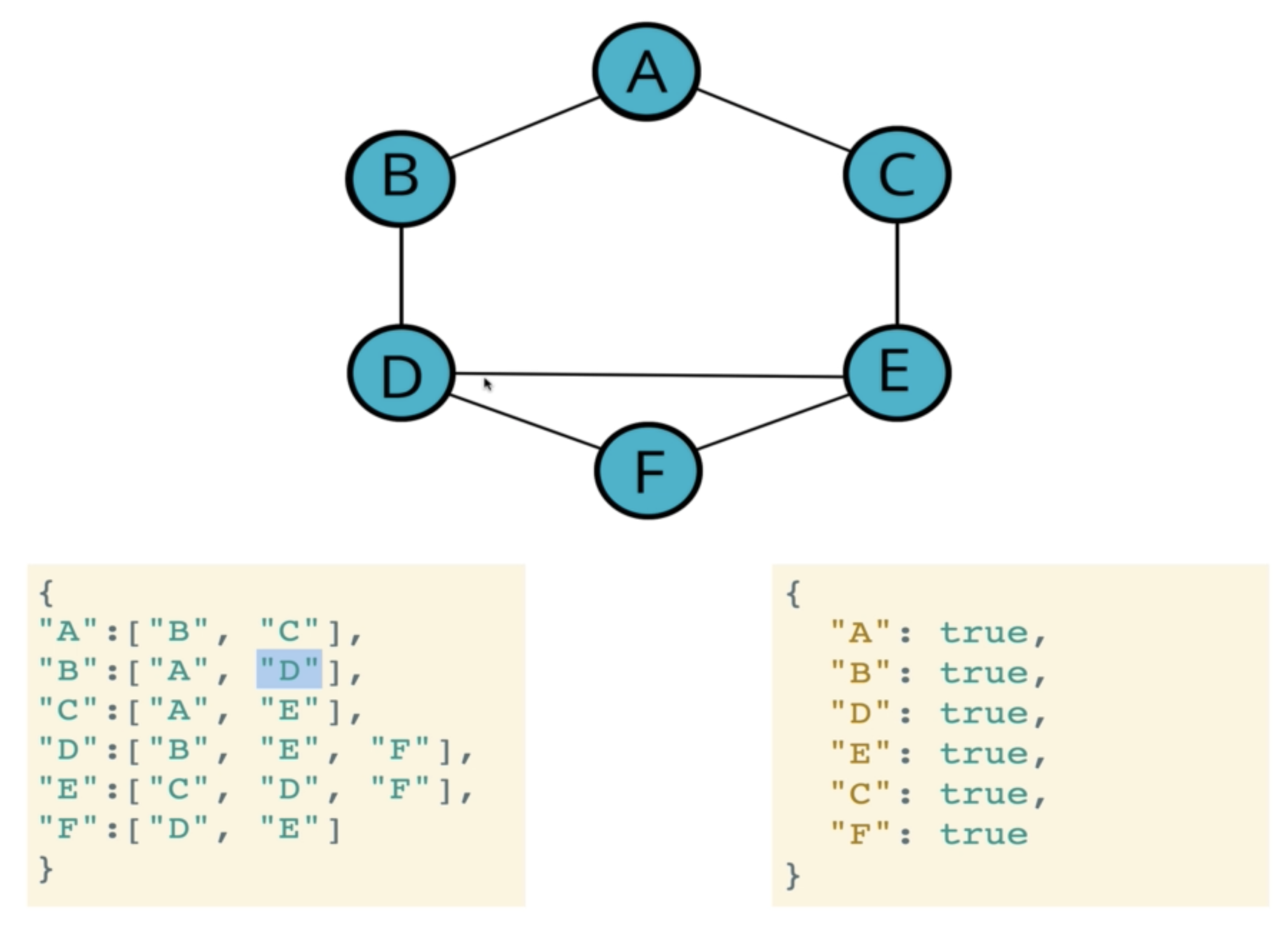- JavaScript Algorithms and Data Structures Masterclass(Udemy Course)
-
그래프는 기본적으로 노드와 노드 간의 연결로 표현되는 자료 구조이다.
(대부분의 자료 구조는 그래프의 하위 자료 구조 정도로 볼 수 있겠다) -
그래프의 예시
-
SNS
-
Location/Mapping
-
Routing
-
Visual Hierarchy
-
File System Optimizations
-
추천 알고리즘
-
-
용어
-
Vertex : 노드
-
Edge : 노드 간의 '연결'
-
무지향성 그래프
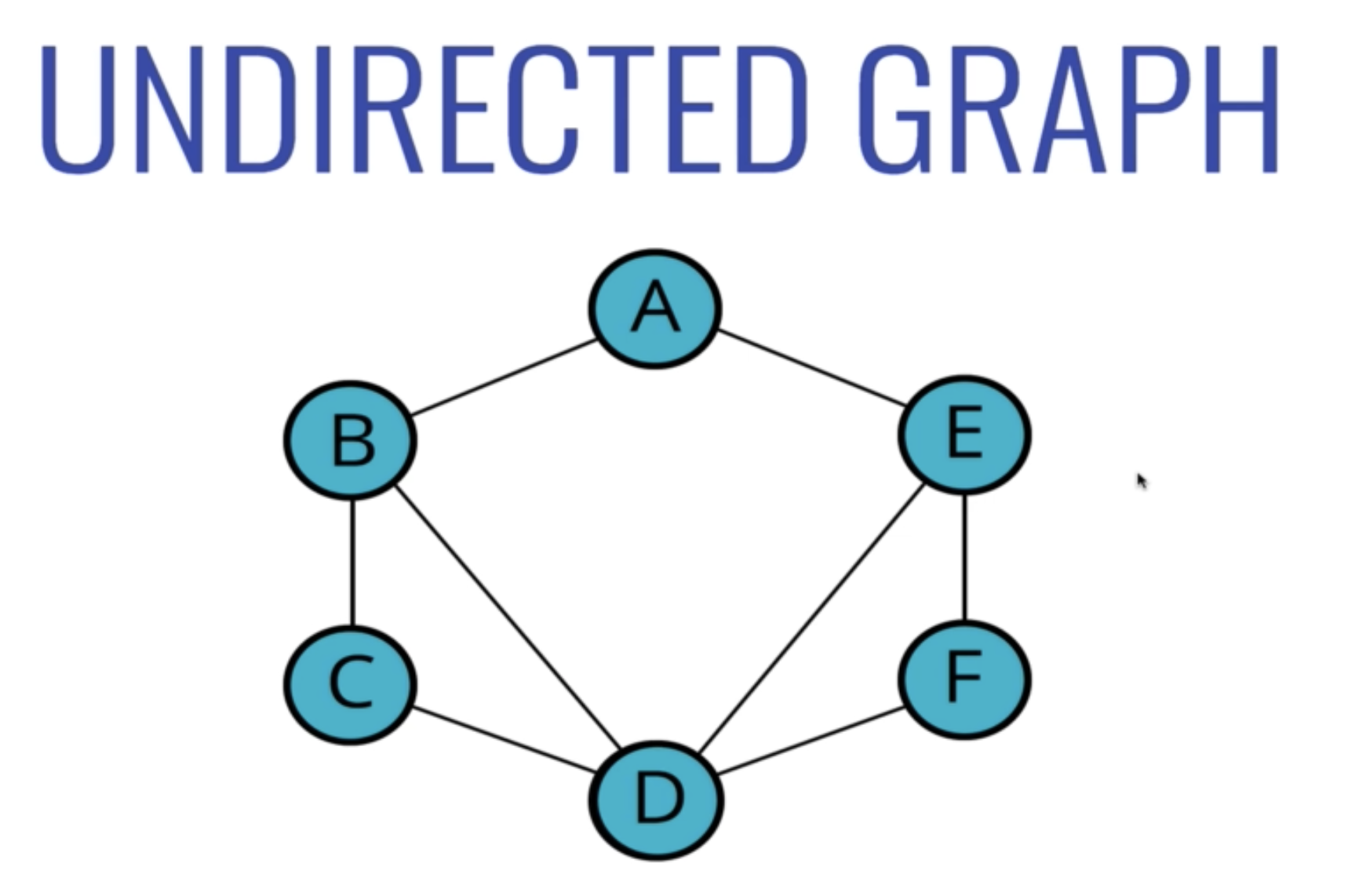
- 지향성 그래프
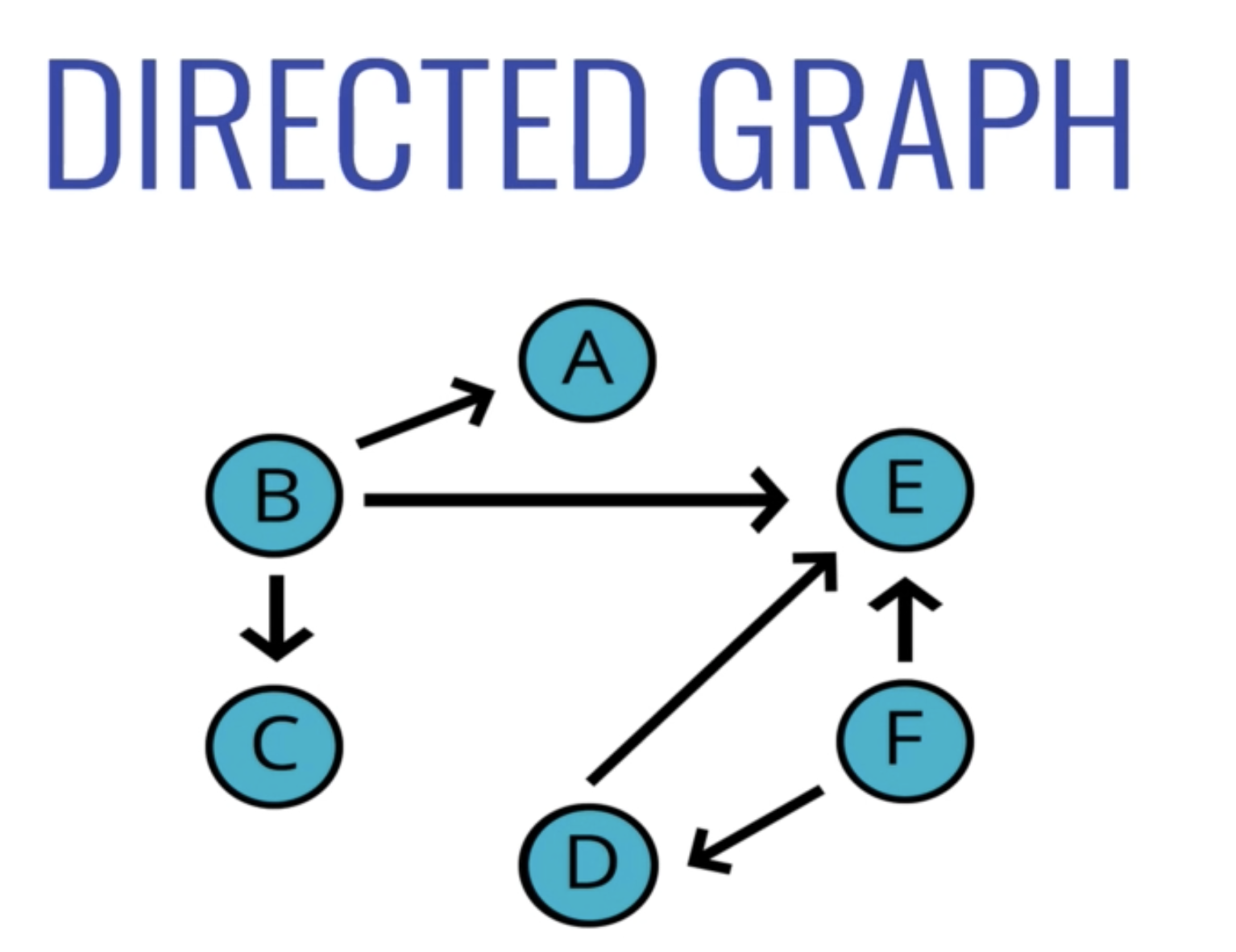
-
-
그래프의 구현 방식
-
인접 행렬
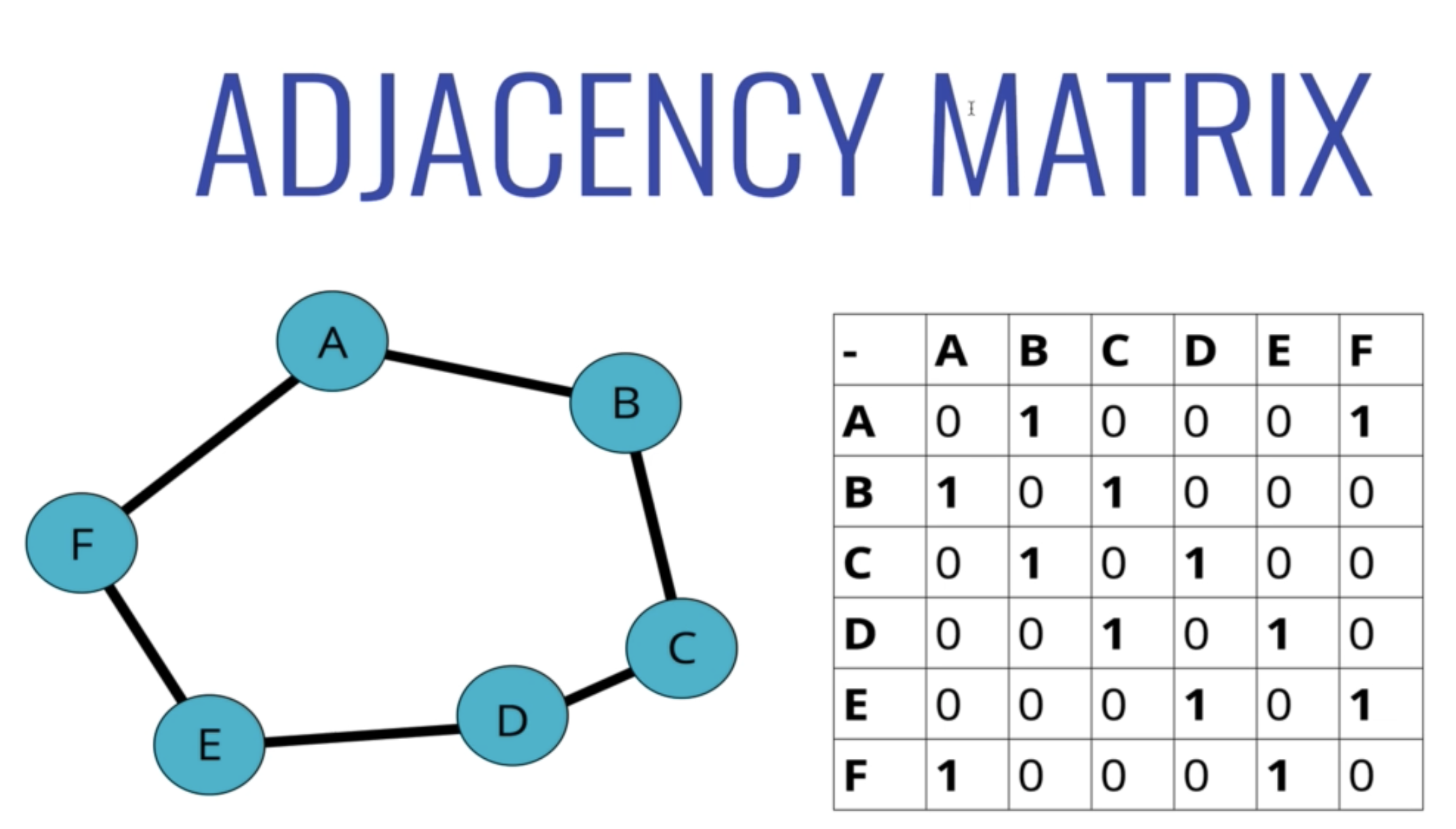
-
인접 리스트
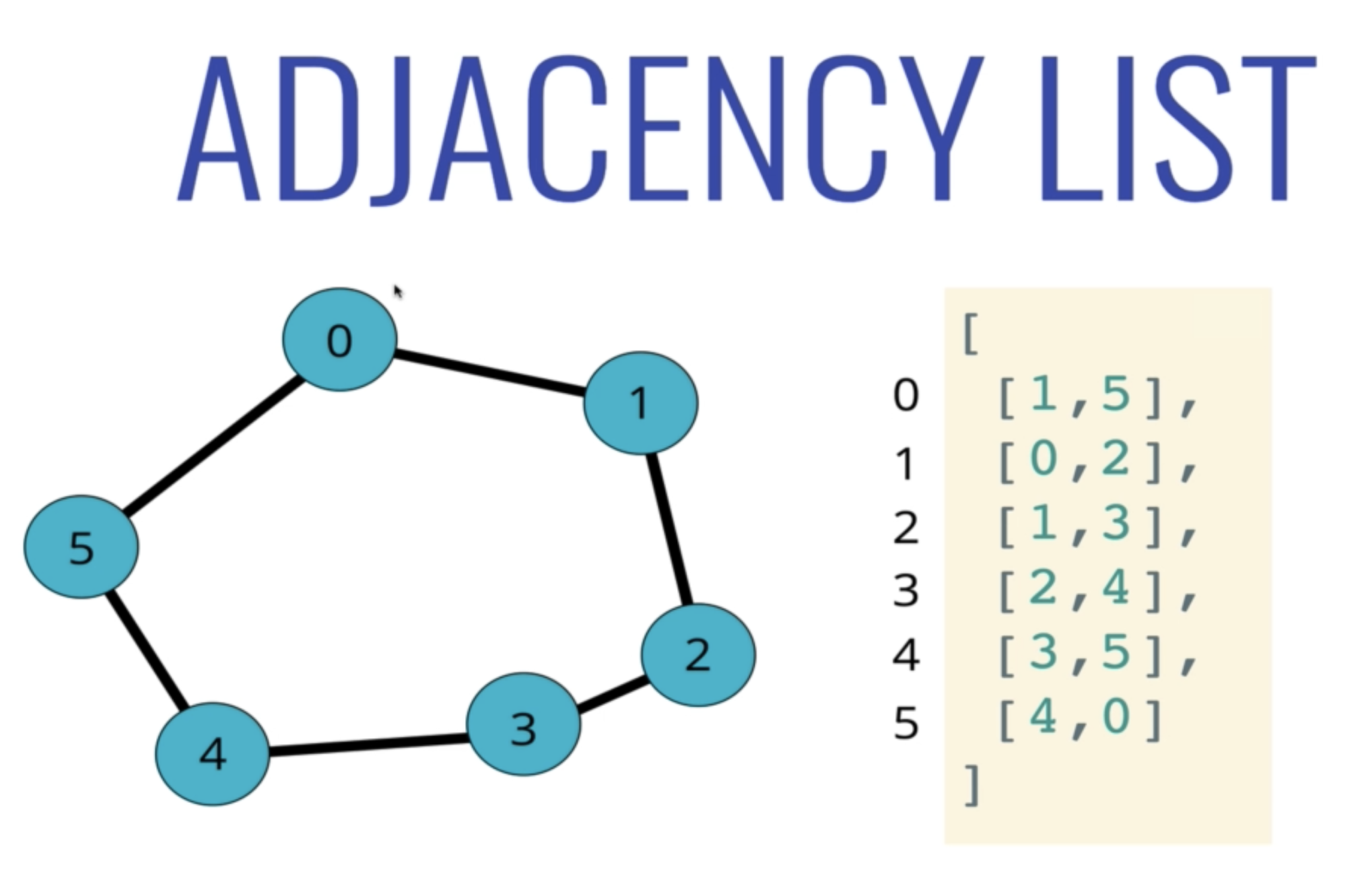
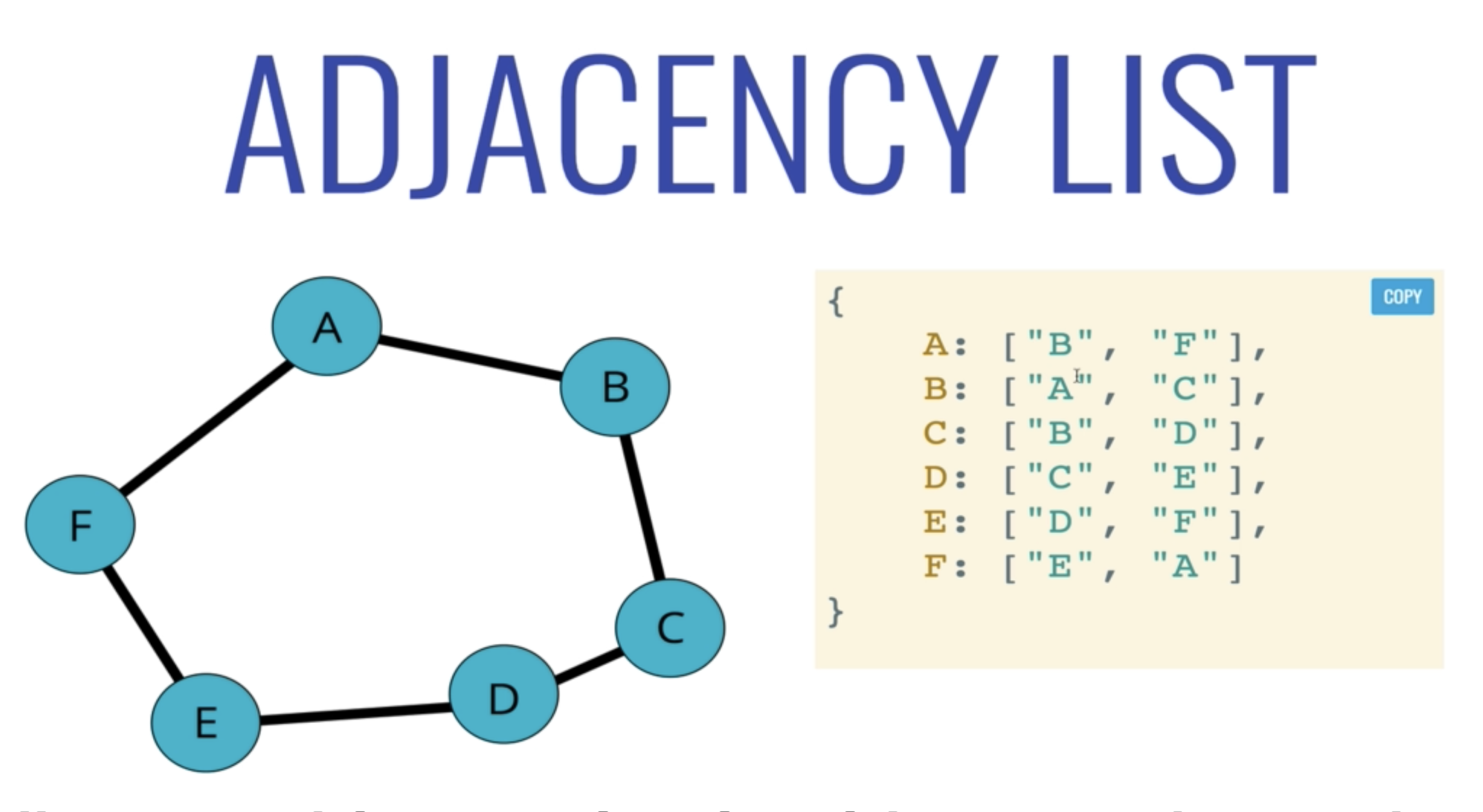
-
-
인접 행렬과 인접 리스트의 시간 복잡도
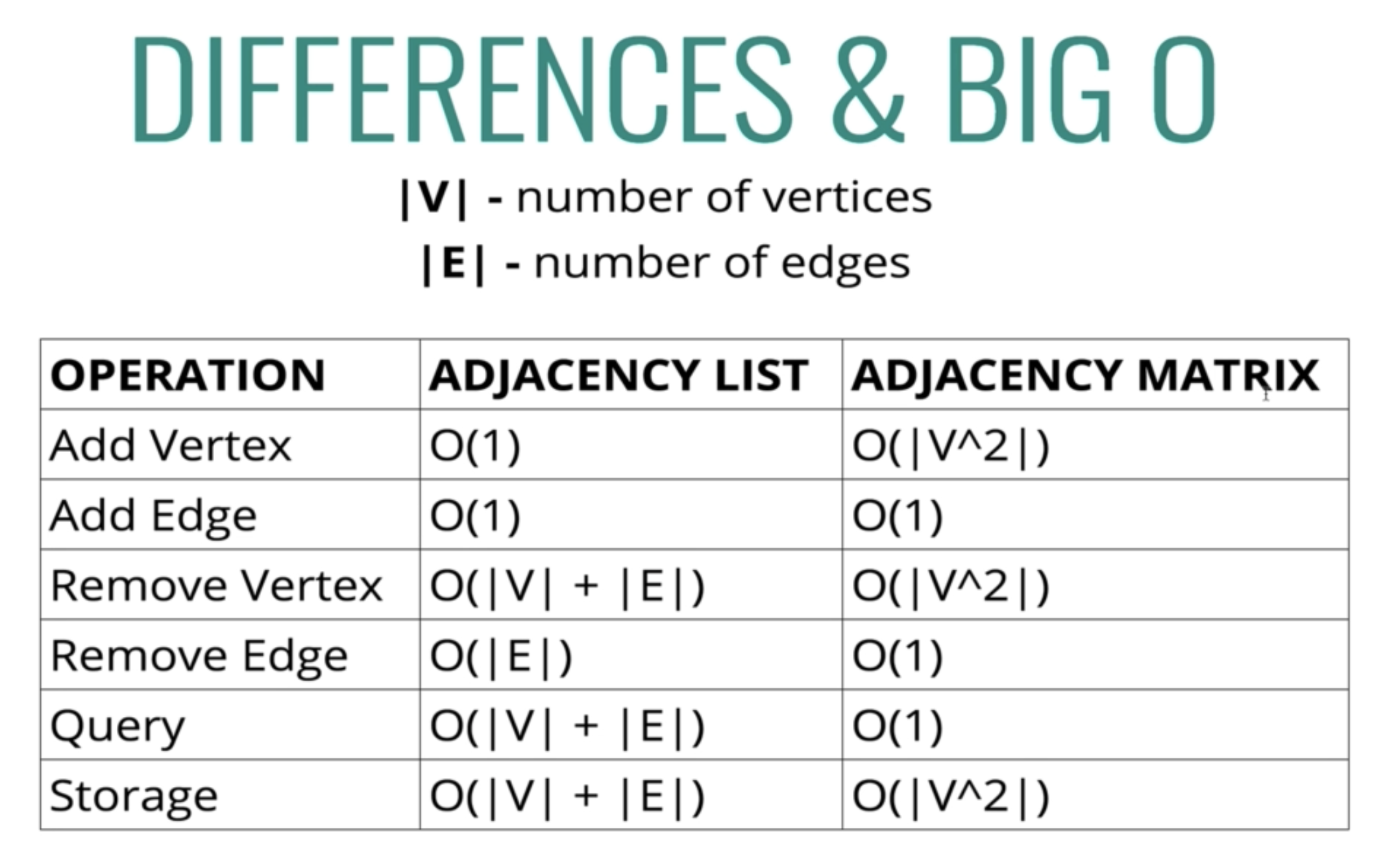
- 인접 리스트가 메모리도 덜 소모하고, 모든 edge를 순회하는데 있어서 더 빠르다.
- 다만, 특정 edge를 찾는 것에 있어서는 인접 행렬이 더 효율적이다.
인접 리스트를 활용한 무지향성 그래프의 구현
const Graph = {
init: function () {
this.adjacencyList = {};
this.length = 0;
},
};addVertex
const Graph = {
// 생략
addVertex: function (vertex) {
if (!this.adjacencyList.hasOwnProperty(vertex)) {
this.adjacencyList[vertex] = [];
this.length++;
}
},
};addEdge
const Graph = {
// 생략
addEdge: function (vertex1, vertex2) {
this.addVertex(vertex1);
this.addVertex(vertex2);
this.adjacencyList[vertex1].push(vertex2);
// 지향성 그래프를 만들고자 한다면 아래 작업을 생략하면 된다.
this.adjacencyList[vertex2].push(vertex1);
return this.adjacencyList;
},
};removeEdge
const Graph = {
// 생략
removeEdge: function (vertex1, vertex2) {
if (!this.adjacencyList.hasOwnProperty(vertex1)) {
return `There's no ${vertex1}`;
}
if (!this.adjacencyList.hasOwnProperty(vertex2)) {
return `There's no ${vertex2}`;
}
function removeHelper(v1, v2) {
const originLength = this.adjacencyList[v1].length;
this.adjacencyList[v1] = this.adjacencyList[v1].filter((vertex) => {
return vertex != v2;
});
if (this.adjacencyList[v1].length == originLength) {
return `There's no edge between ${v1} and ${v2}`;
}
if (this.adjacencyList[v1].length == 0) {
delete this.adjacencyList[v1];
this.length--;
}
}
removeHelper.call(this, vertex1, vertex2);
removeHelper.call(this, vertex2, vertex1);
return this.adjacencyList;
},
};removeVertex
const Graph = {
// 생략
removeVertex: function (vertex) {
if (!this.adjacencyList.hasOwnProperty(vertex)) {
return `There's no ${vertex}`;
}
const edges = this.adjacencyList[vertex];
edges.forEach((v) => {
this.removeEdge(v, vertex);
});
return this.adjacencyList;
},
};그래프 순회
-
그래프 순회의 예시
-
peer to peer networking
-
web cralwers
-
최단 경로 탐색
-
GPS 네비게이션
-
미로 풀기
-
AI
(게임에서 이길 수 있는 최단 경로)
-
-
DFS
DFS(재귀문)
const Graph = {
// 생략
DFSbyRecursion: function (start) {
if (this.length == 0) {
return;
}
const visitedHash = {};
const visitedList = [];
function traverse(node) {
visitedHash[node] = true;
visitedList.push(node);
if (visitedList.length == this.length) {
return;
}
const neighbors = this.adjacencyList[node];
for (let i = 0; i < neighbors.length; i++) {
const currentNode = neighbors[i];
debugger;
if (!visitedHash.hasOwnProperty(currentNode)) {
traverse.call(this, currentNode);
}
}
}
traverse.call(this, start);
return visitedList;
},
};
const graph = Object.create(Graph);
graph.init();
graph.addEdge("A", "B");
graph.addEdge("A", "C");
graph.addEdge("B", "D");
graph.addEdge("C", "E");
graph.addEdge("D", "E");
graph.addEdge("D", "F");
graph.addEdge("E", "F");
graph.DFSbyRecursion("A");- A는 visited에 반영된 상태이며, A의 이웃인 B와 C 중 B를 바라보고 있다.
-
visited에 B가 없었기에 traverse의 인자로 B를 넘겨줘, B 역시 visited에 반영시켰다.
-
이제 B의 이웃인 A와 D중 A를 바라보고 있다.
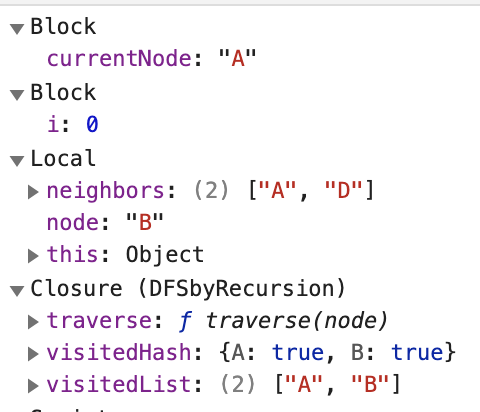
-
하지만 A는 이미 visited에 반영되어 있는 상태기 때문에 traverse를 호출하지 않고 넘어간다.
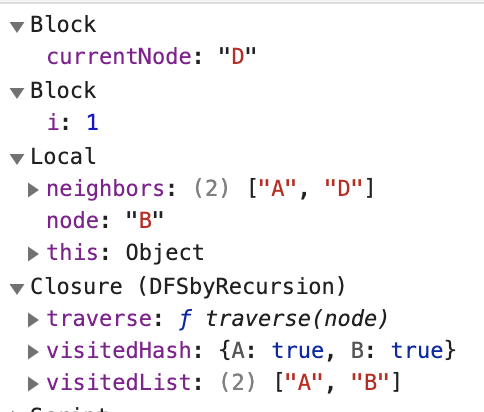
-
그럼 B의 나머지 이웃인 D로 넘어가는데, D는 visited에 반영되어 있지 않다.
-
따라서 taverse의 인자로 D를 넘겨 호출한다.
-
D가 이제 visited에 반영되었으며, D의 이웃인 B, E, F 중 B를 바라보고 있다.
-
그러나 B는 visited에 반영되어 있으므로 그냥 넘어간다.
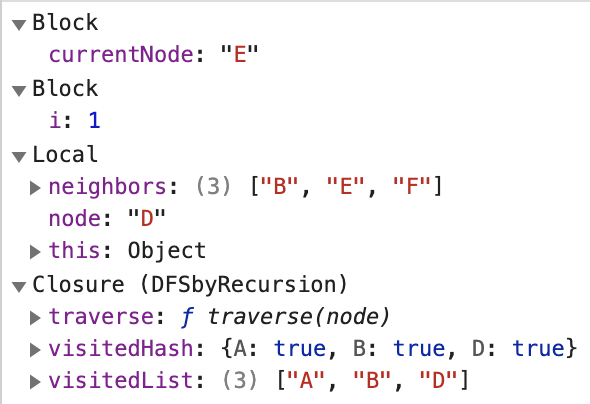
-
D의 다음 이웃인 E를 바라보고 있다.
-
E는 visited에 반영되어 있지 않으므로, traverse의 인자로 E를 넘겨 호출한다.
-
이제 E가 visited에 반영되었으며, E의 이웃인 C, D, F중 C를 바라본다.
-
C가 visited에 반영되어 있지 않으므로, traverse의 인자로 C를 넘겨 호출한다.
-
C가 이제 visited에 반영되었으며, C의 이웃인 A와 E중 A를 바라본다.
-
A는 이미 visited에 반영되었으므로, 그냥 넘어간다.
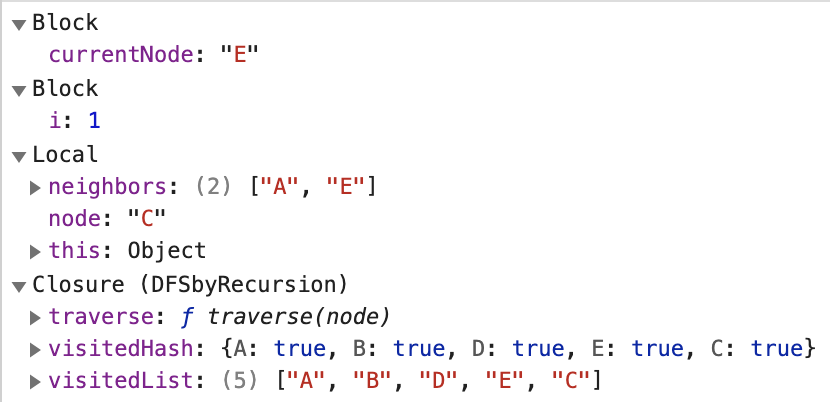
-
E 또한 이미 visited에 반영되었으므로, 그냥 넘어간다.
-
앞서 4의 초반부에서 E의 이웃 중 C에 대하여 호출한 traverse가 종료되어 콜 스택에서 사라졌다.
-
그러니 3에서 E에 대하여 호출된 traverse는 E의 나머지 이웃인 D와 F에 대하여 마저 실행해야 한다.
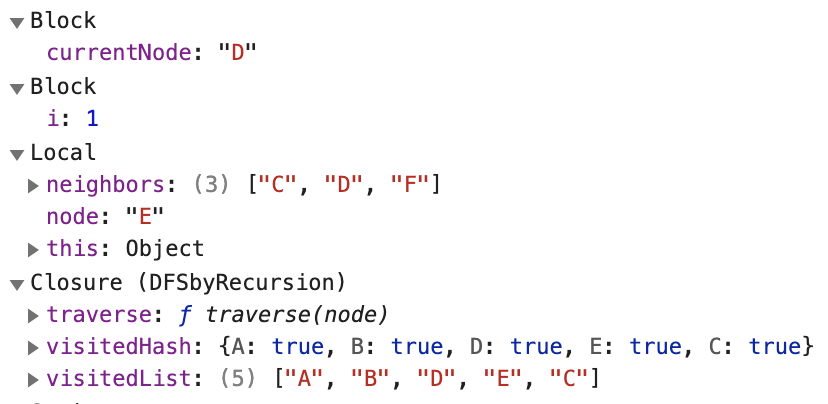
-
D는 이미 visited에 반영되어 있으니 넘어간다.
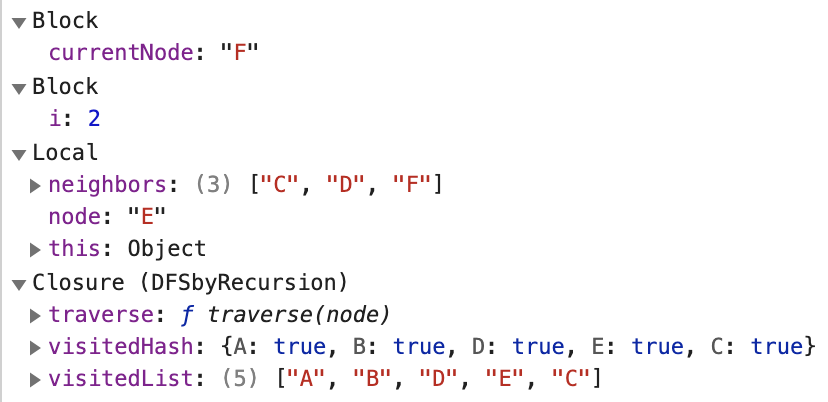
-
F는 아직 visited에 반영되어 있지 않으므로, traverse의 인자로 F를 넘겨 호출한다.
-
F를 인자로 호출받은 travers가 F를 visited에 등록함으로써 재귀의 기저 조건을 충족했고, 이후로는 쌓여있던 콜스택들을 차례로 종료하는 절차만 남았다.
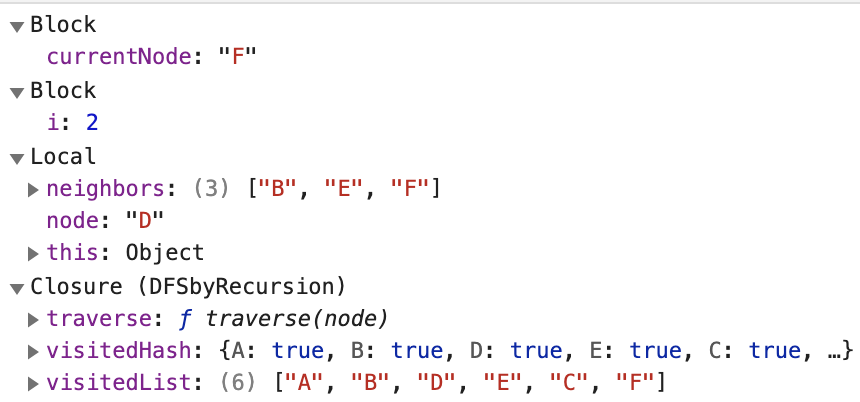
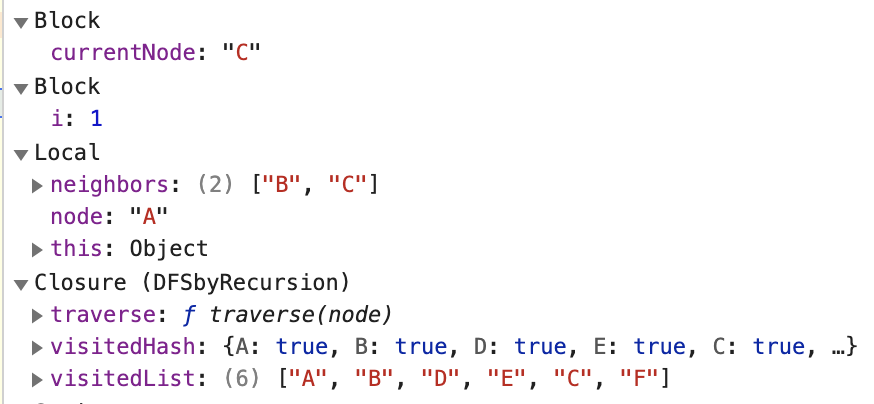
DFS(반복문)
const Graph = {
// 생략
DFSbyLoop: function (start) {
if (this.length == 0) {
return;
}
const stack = [start];
const visitedHash = {};
const visitedList = [];
while (stack.length) {
const current = stack.pop();
if (visitedHash.hasOwnProperty(current)) {
continue;
}
visitedHash[current] = true;
visitedList.push(current);
const neighbors = this.adjacencyList[current];
for (let i = neighbors.length - 1; i >= 0; i--) {
const node = neighbors[i];
debugger;
if (!visitedHash.hasOwnProperty(node)) {
stack.push(node);
}
}
}
return visitedList;
},
};
const graph = Object.create(Graph);
graph.init();
graph.addEdge("A", "B");
graph.addEdge("A", "C");
graph.addEdge("B", "D");
graph.addEdge("C", "E");
graph.addEdge("D", "E");
graph.addEdge("D", "F");
graph.addEdge("E", "F");
graph.DFSbyLoop("A");BFS
const Graph = {
// 생략
BFSbyLoop: function (start) {
if (this.length == 0) {
return;
}
const queue = [start];
const visitedHash = {};
const visitedList = [];
while (visitedList.length != this.length) {
const current = queue.shift();
if (visitedHash.hasOwnProperty(current)) {
continue;
}
visitedHash[current] = true;
visitedList.push(current);
const neighbors = this.adjacencyList[current];
debugger;
queue.push(...neighbors);
}
return visitedList;
},
};
const graph = Object.create(Graph);
graph.init();
graph.addEdge("A", "B");
graph.addEdge("A", "C");
graph.addEdge("B", "D");
graph.addEdge("C", "E");
graph.addEdge("D", "E");
graph.addEdge("D", "F");
graph.addEdge("E", "F");
graph.BFSbyLoop("A");전체 코드
const Graph = {
init: function () {
this.adjacencyList = {};
this.length = 0;
},
addVertex: function (vertex) {
if (!this.adjacencyList.hasOwnProperty(vertex)) {
this.adjacencyList[vertex] = [];
this.length++;
}
},
addEdge: function (vertex1, vertex2) {
this.addVertex(vertex1);
this.addVertex(vertex2);
this.adjacencyList[vertex1].push(vertex2);
// 지향성 그래프를 만들고자 한다면 아래 작업을 생략하면 된다.
this.adjacencyList[vertex2].push(vertex1);
return this.adjacencyList;
},
removeEdge: function (vertex1, vertex2) {
if (!this.adjacencyList.hasOwnProperty(vertex1)) {
return `There's no ${vertex1}`;
}
if (!this.adjacencyList.hasOwnProperty(vertex2)) {
return `There's no ${vertex2}`;
}
function removeHelper(v1, v2) {
const originLength = this.adjacencyList[v1].length;
this.adjacencyList[v1] = this.adjacencyList[v1].filter((vertex) => {
return vertex != v2;
});
if (this.adjacencyList[v1].length == originLength) {
return `There's no edge between ${v1} and ${v2}`;
}
if (this.adjacencyList[v1].length == 0) {
delete this.adjacencyList[v1];
this.length--;
}
}
removeHelper.call(this, vertex1, vertex2);
removeHelper.call(this, vertex2, vertex1);
return this.adjacencyList;
},
removeVertex: function (vertex) {
if (!this.adjacencyList.hasOwnProperty(vertex)) {
return `There's no ${vertex}`;
}
const edges = this.adjacencyList[vertex];
edges.forEach((v) => {
this.removeEdge(v, vertex);
});
return this.adjacencyList;
},
DFSbyRecursion: function (start) {
if (this.length == 0) {
return;
}
const visitedHash = {};
const visitedList = [];
function traverse(node) {
visitedHash[node] = true;
visitedList.push(node);
if (visitedList.length == this.length) {
return;
}
const neighbors = this.adjacencyList[node];
for (let i = 0; i < neighbors.length; i++) {
const currentNode = neighbors[i];
debugger;
if (!visitedHash.hasOwnProperty(currentNode)) {
traverse.call(this, currentNode);
}
}
}
traverse.call(this, start);
return visitedList;
},
DFSbyLoop: function (start) {
if (this.length == 0) {
return;
}
const stack = [start];
const visitedHash = {};
const visitedList = [];
while (visitedList.length != this.length) {
const current = stack.pop();
if (visitedHash.hasOwnProperty(current)) {
continue;
}
visitedHash[current] = true;
visitedList.push(current);
const neighbors = this.adjacencyList[current];
for (let i = neighbors.length - 1; i >= 0; i--) {
const node = neighbors[i];
debugger;
if (!visitedHash.hasOwnProperty(node)) {
// 다음 반복문에서 걸러지기 때문에 굳이 필요한 조건은 아니나,
// 걸러질 걸 알면서도 굳이 stack에 추가하는 것도 이상해서 걸어놓은 조건
stack.push(node);
}
}
}
return visitedList;
},
BFSbyLoop: function (start) {
if (this.length == 0) {
return;
}
const queue = [start];
const visitedHash = {};
const visitedList = [];
while (visitedList.length != this.length) {
const current = queue.shift();
if (visitedHash.hasOwnProperty(current)) {
continue;
}
visitedHash[current] = true;
visitedList.push(current);
const neighbors = this.adjacencyList[current];
debugger;
queue.push(...neighbors);
}
return visitedList;
},
};
const graph = Object.create(Graph);
graph.init();
